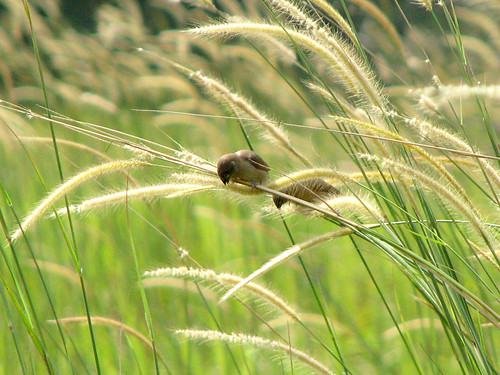
Still, this part of punggol is always interesting for a nice walk due to its rustic surroundings. I saw two species of munias on this area covered with Elephant Grass (Pennisetum sp.). These two were probably young Scaly-breasted Munias (Lonchura punctulata) feeding on the seeds of the grasses.

Unfortuntately, I disturbed them and the small flock flew to a nearby dead Rhu tree for refuge.
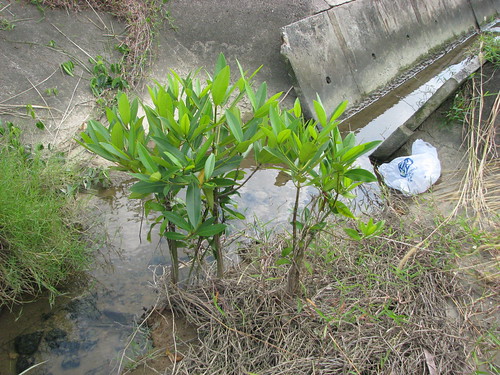
Right in view of Serangoon island, I found a few young Rhizophora trees growing on a canal leading to the straits. This place is also a favourite spot for some anglers.
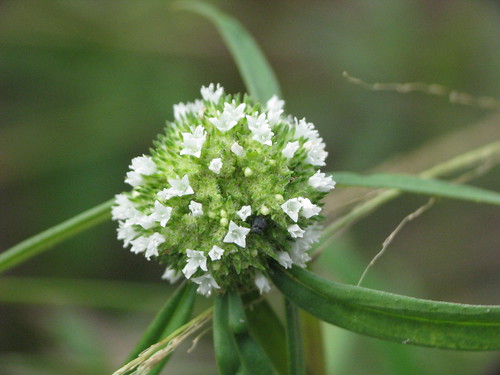
As the wasteland was dominated by many wild flowers and grasses, it is also a great photographic opportunity to capture some pictures of the beautiful flowers. Here is the Prostrate False Buttonweed (Spermacoce prostrata). Seems rather appropriate that the words sperm and prostate comes together in the scientific name. :)
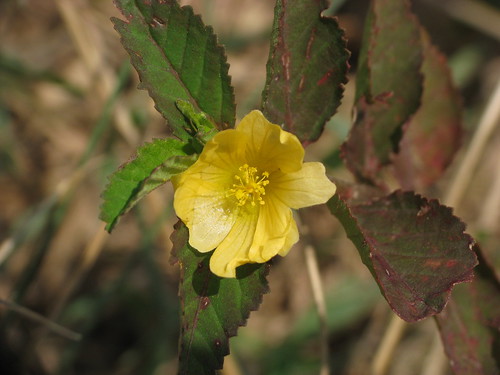
This pretty yellow flower belongs to the Common Wireweed (Sida acuta), believed to be introduced from America. It is supposed to be poisonous at least to goats according to a report.

Not a clear picture but this shows the female flower of the Rhu tree (Casuarina equisetifolia) which consists of a tuft of red. The white unknown stuff on the left might be the flower of a sea lettuce?

It is the durian season now but do you know its the rambutan's (Nephelium lappaceum) too? I found this tree that had lots of ripen fruits growing from a terrace house. Really felt like plucking some down but it was too high to reach. ;p
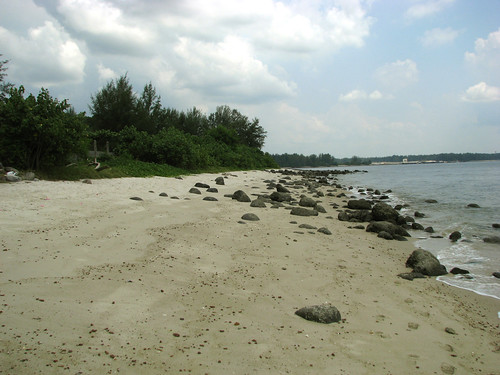
I made a big detour to Punggol Beach next. The road to here was very challenging, so many up and down slopes...

It is interesting to see that dead barnacles growing on the rocks provided refuge for their distant shelled cousins, the shellfishes.

It was pretty barren here except for many Purple Climbers (Metopograpsus sp.) and Porcelain Crabs (Porcellanidae) scattering about the rocks. Hence, I was already quite happy to see other moving life, the onch slugs (Onchidiidae).
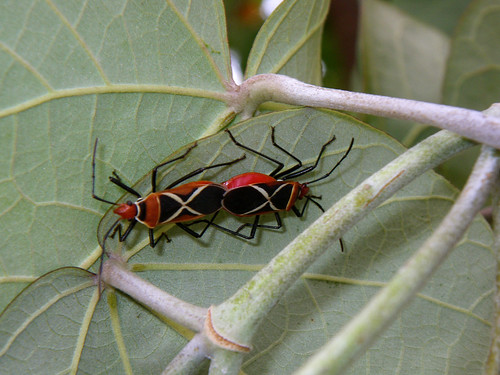
On a Sea Hibscuis leaf, I managed to find a pair of mating Cotton Stainer Bugs (Dysdercus decussatus) too.

There are only two species of bee eaters here and this is the Blue-throated Bee-eater (Merops viridis), easily distinguish from the neck colour.
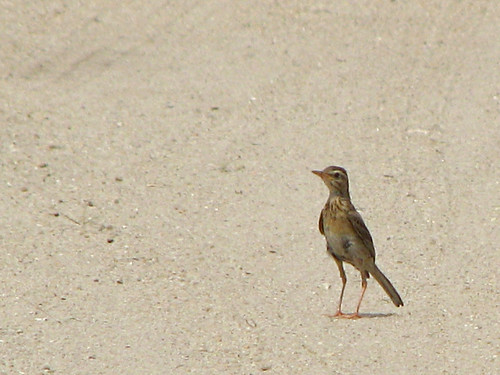
A Paddyfield Pipit (Anthus rufulus) was running about the sandy field looking for insects and other arthropods.
Unfortuntately, I was too burnt out and dehyrated at the beach to carry on exploring. My cap and Nivea SPF 50 sunblock doesn't seem to help much either hence I had to turn back. Luckily I bought along a can of 100 plus else I don't think my little 350ml water bottle can last me for the trip back home.

3 comments:
Thanks for sharing. There are lots of wild flowers and critters to be photographed here. I must visit the place again as soon as possible.
Thank you~ :)
Yea, but I think I might choose a day with an overcast though. It is simply too unbearable to walk in the sun.
i like this post!
Post a Comment